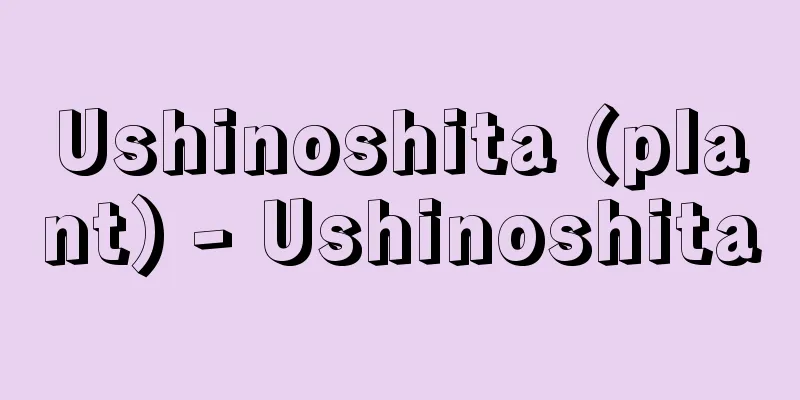Unit union - Tanikumiai

|
A union that is the lowest unit in a labor union organization. It is also called a unit labor union, or a single union for short. In terms of organizational form, it is one that directly organizes individual workers as members and has the substance of an independent union. A single union is the smallest organizational unit when forming a higher organization, and may be called a branch or a sub-union in relation to the higher organization. In addition, to be a single union, it must have an organizational substance that can carry out union activities independently. Therefore, a single union must have its own rules and be equipped with an executive body, a decision-making body, an accounting body, etc. In Japan, labor unions are often organized as a unit for a single company or business establishment, and labor unions are organized by individual workers joining directly. Unless it is an organization of a federation, all are called single unions, regardless of whether they are by business establishment, company, or industry. In addition, a union organized in one industry, regardless of whether it is a single union by industry or a federation, is called a single industry (unit industrial union). In 1985, there were over 74,000 local unions in Japan, but as of 2012, this figure is around 55,000. The unionization rate has also been declining, standing at around 18% in 2012. The reason for this is that Japanese labor unions, which have traditionally organized mainly regular employees, have been unable to organize non-regular employees, whose numbers are increasing year by year. With this overall decline in organizational power, the presence of labor unions has weakened. [Hiroshi Murashita and Mikio Yoshida] [Reference items] | | |Source: Shogakukan Encyclopedia Nipponica About Encyclopedia Nipponica Information | Legend |
|
労働組合組織のなかで最下部の単位をなす組合。単位労働組合、略して単組ともよぶ。組織形態としては、労働者個人を直接に構成員として組織するものであり、かつ独立した組合の実体を有しているものをいう。単組は、上部団体を構成するときの組織上の最小の単位であり、上部団体との関係では支部あるいは分会とよばれることもある。また単組であるためには独立して組合活動をなしうる組織実体を有している必要がある。それゆえに、単組は、独自の規約を有し、かつ執行機関、決議機関、会計などを備えていなければならない。日本の労働組合は、一つの企業や事業所を単位として組織されている場合が多く、個々の労働者が直接加盟することにより労働組合が組織されている。連合体の組織でない限り、事業所別、企業別、産業別などのいかんを問わず、すべて単組とよぶ。なお、産業別の単組であるかその連合体であるかを問わず、一産業で組織されている組合を単産(単位産業別組合)とよぶ。1985年(昭和60)当時日本には7万4000余の単位組合が存在していたが、2012年(平成24)時点では約5万5000となっている。また、労働組合の組織率も低下傾向にあり、2012年には約18%である。この背景には、正規従業員を中心に組織してきた日本の労働組合が、年々増加している非正規従業員を組織できていないという事情がある。このような組織力の全体的な低下に伴い、労働組合の存在感が弱まっている。 [村下 博・吉田美喜夫] [参照項目] | | |出典 小学館 日本大百科全書(ニッポニカ)日本大百科全書(ニッポニカ)について 情報 | 凡例 |
>>: Unit - Tan'i (English spelling) unit English
Recommend
Parsi - Parsi (English spelling) Pārsī
Zoroastrians who migrated to India. After the fal...
Drepanocladus fluitans (English spelling) Drepanocladusfluitans
...In Lake Inawashiro, the moss Jungermannia nipp...
Kaiagabi - Kaiagabi
…A port city on the northwest coast of Gwynedd, n...
Clathrus ruber
…Other species in the Clathrus family include the...
Kataib - Kataib
...As Muslim dissatisfaction and criticism of thi...
Tokai
[1] [noun] The sea in the east. The sea in the eas...
Selborne
A small village in Hampshire, southern England. 8k...
active placebo
…Of these, the double-blind trial is currently co...
Judicial state - Shihokokka
Under the principle of separation of powers, it r...
Elevator operation management control system - Elevator operation management control system
...Also called an elevator. A machine that transp...
Rudolf Slánský
Czechoslovak politician. Born into a Slovakian Je...
Ono no Otsuu
...A woman who is said to have written "Joru...
Deep Color Effect
The effect of shifting the absorption of a substa...
Maria Dąbrowska
Polish female novelist. After studying at univers...
Kang-li Kui-kui (English spelling)
1295‐1345 A calligrapher from the Yuan Dynasty in ...









